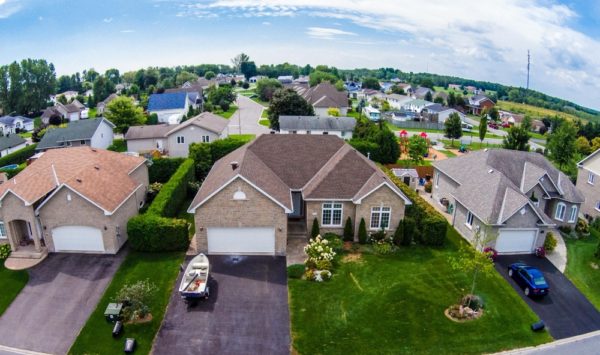Do Insurers Use Aerial Imagery?

Insurers Already Use Aerial Imagery
Insurers love data and they use the data they collect about your home to properly access the risk your home presents and set your premium. In most cases, they gather this information by asking you to fill out a variety of forms as well as sending out inspectors to look at your property in more detail.
While the majority of insurers still collect data this way, that could change in the future. A startup called Cape Analytics is using machine learning and geospatial imagery to help insurers pull out data points for their risk assessment of homes. They can determine roofing materials, roof condition as well as the geometry of the building and tree cover or other landscape issues that could pose a risk.
“They’re seeing a much more streamlined process where they’re able to offer a quote more quickly and more accurately to the customer,” said cofounder and CEO Ryan Kottenstette in a recent press release.
The company, which is three years old, estimates that it could provide data on roughly 70 million homes. Cape Analytics started in the Southeast where hurricanes and severe windstorms can easily damage roofs, which is why insurers need to know both the condition of the roof as well as the type of materials used.
Cape Analytics uses satellite and aerial images provided by third party service providers for images and then runs them through a neural network to determine the features that insurers would be interested in to help establish rates. In many cases, their information is more accurate than the details provided by the homeowner.
“Most consumers don’t know what a mansard roof might be, for example,” Kottenstette said in the press release.
Insurers Already Use Aerial Imagery
Using aerial imagery is nothing new for insurers, they routinely use it to document and understand damage from hurricanes, tornadoes and other natural disasters. Cape Analytics hopes that their technology will help take insurers use of aerial imagery to the next level, helping them learn about features of a home without having to send out an inspector to examine the roof or look for tree limbs that could cause damage.
“You can’t sit there and have humans consistently reviewing pictures of 70 million homes in the event that somebody wants to get an insurance quote,” Kottenstette said in the press release.
Obviously, aerial imagery can only deal with the outside of the home at this point, limiting its functionality in some cases. While collecting details about roofing materials as well as examining the property for trees or other risky issues with a property will save insurers time and money, it doesn’t completely do away with the need for an inspection in many cases.
Factors That Impact Your Premium
Roofing materials and the condition of your roof are not the only factors that will impact your premium. Here are just a few other factors that insurers consider when setting rates:
Pets: Depending on what type of pet you have it could impact your premium. Certain dog breeds will absolutely push up your rates, Pit Bulls and Rottweilers are excellent examples of dog breeds that insurers are reluctant to insure.
Pools, Trampolines and Hot Tubs: All of these increase you homes risk factor. If you have any of these you will more than likely pay a higher premium. Put a fence around your pool to help keep out uninvited guests and help lower your rates.
Proximity to a Fire Station: The closer you are to a fire station, the lower your premium will be as insurers love houses that fire departments can get to quickly.
Flood Risk: If your home is located in a high-risk flood area your premium will be higher, despite the fact that a typical homeowners policy doesn’t cover flood damage. If you are in a high-risk area you will need a separate flood insurance policy.
